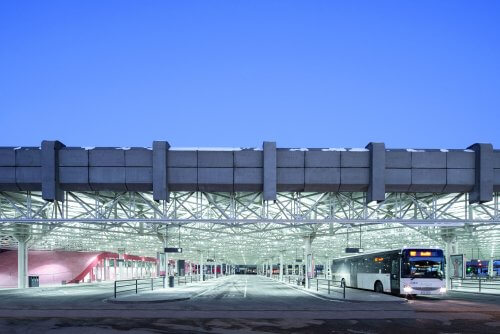
Czech Republic
Initiated by architects Chybik & Kristof in 2011, its designers say the redesign of Brno’s Zvonarka Central Bus Terminal brings to light the site’s original Brutalist identity. The redesign and restoration project saw the architects preserve the existing Brutalist structure – a steel supporting frame and concrete roof – and its original architectural identity whilst rethinking the use of what was a decaying transport hub and public space, and transforming it to meet current needs. Built in 1988, the architects said the bus station had long been considered one of the notable remaining examples of the Czech Republic’s Brutalist architectural heritage.
“Demolitions are a global issue,” explained Co-Founding Architect Michal Kristof. “Our role as architects is to engage in these conversations and demonstrate that we no longer operate from a blank page. We need to consider and also work from existing architecture – and gradually shift the conversation from creation to transformation.” The role of the architect begins prior to the first sketches. Fully understanding the social dynamics at play in every project is at the heart of our practice,” added Co-Founder Ondrej Chybik. “With this in mind, we as architects assume a crucial role in both the inception and materialization of a project – we are here at the beginning, in the middle, and at the end. Instigating a dialogue; resolving the existing shortfalls – social, economic, cultural, and deeply political; bringing forward innovative and inclusive solutions – it is our responsibility to step out of our studios and onto the streets.”
The station sees over 820 regional, national and international arrivals and departures per day, with around 17,000 passengers passing through. To open up the terminal onto the city, the architects removed the temporary structures added in the 1990s and created a second entry to the station at street level. Ondrej Chybik and Michal Kristof said: “While our familiarity with the city of Brno proved to be a real asset, our engagement for this project resonates with architects internationally. Beyond a functional concern, the architects’ role is rooted in understanding, deconstructing and responding to the shortcomings that often form our social structures – that is, our role is intrinsically social, based on ‘people.’ Ultimately, by revisiting the past, engaging with the present and projecting to the future, architects can, and must, be catalysts for change.”

